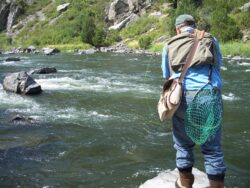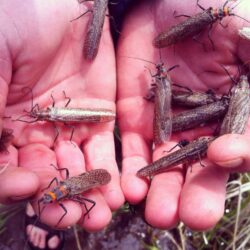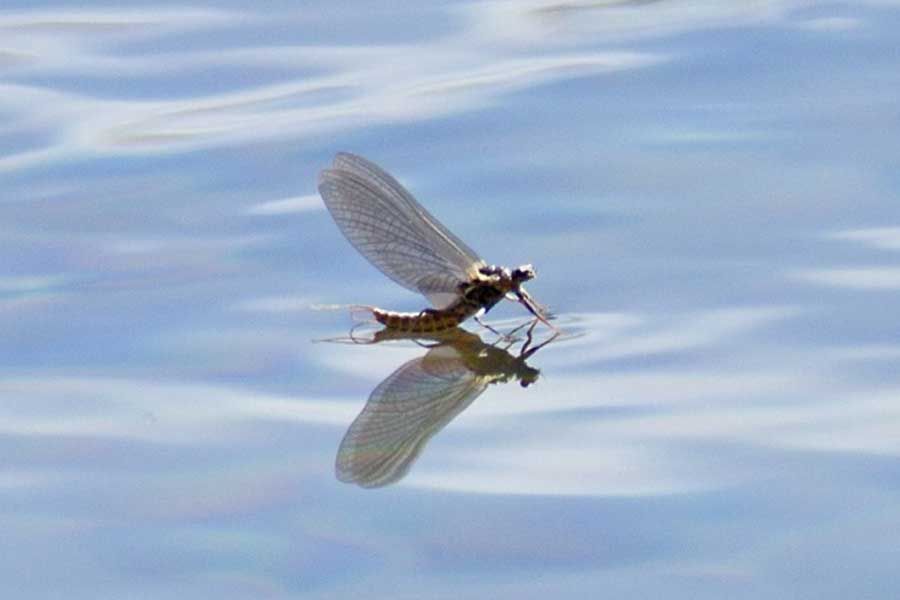 Nothing is worse than having your dry fly sink during a hatch. Presentation is key. Would you tackle a wet tasty treat?
Nothing is worse than having your dry fly sink during a hatch. Presentation is key. Would you tackle a wet tasty treat?
Caddis hatches are very common in most rivers, for trout. They begin during midday and can last past midnight. You can fish the various stages of the hatch but when the adults are on the surface, that’s what the fish wants. During one hatch, I was hammering the trout on the Madison River. If I could present a “DRY” fly, they would eat it. I was using an X-Caddis, that is a simple tie. It is fast to tie since it does not have any palmer hackling. The fly tends to sit on the water’s surface perfectly, just like a natural. The problem is that without hackles, it gets wet faster and needs to be maintained.
 So how can you keep a Dry Fly Dry after several fish have devoured it?
So how can you keep a Dry Fly Dry after several fish have devoured it?
1 False casting will snap off some moisture. A couple quick back and forths, and you can get a few more drifts.
2 Rubber Band Flick Hook the wet dry fly onto a rubber band attached to your vest, Now pluck the rubber band, Water will flick off the wet fly.
3 Blow on it! A few good breaths will help dry the fly.
4 Crying Towel Use a cloth to wipe the wet dry fly. I have also seen guys put the fly under their arm or squeeze it into a dry part of their shirt or handkerchief.
5 Nylon Tippet will float and hold up the dry fly better than Floro carbon tippet, which sinks.
Dry Fly Flotants are also helpful when maintaining your wet dry fly. Use a gel or paste dry fly product on your dry fly before you fish it. Squirt a dab on the fly and smear it in. Less is more here. Now fish away. Once the fly begins sinking, bring it in after a few false casts. Get out a desiccant powder, that will absorb any moisture off the wet dry fly. A couple of finger flicks will remove any excess powder. Catch another fish.
When you catch a fish, maintain your wet and fish slobbered dry fly. Remember that fish slobber is heavier than water. Rinse the wet dry fly off in the river. You can again give it a few false casts. Now add the semi dry fly to the desiccant powder. This powder will suck off any moisture. A couple finger flicks and catch another fish.
Failure to maintain your fly just wastes time. Eventually every dry fly will stop floating. Re-rig and place the wet dry fly on a fly patch to air dry. You can reuse the fly later.
Another thought is that there are times when a dry fly is best fished wet! I know that this contradicts this article but… Fishing a hopper wet can produce BIG fish on hot summer days when big fish stay in the shadows and deeper against the banks. I have also used sinking dry salmon flies and done well a week after the main hatch has moved upstream.
Stay High and Dry!
Montana Grant




